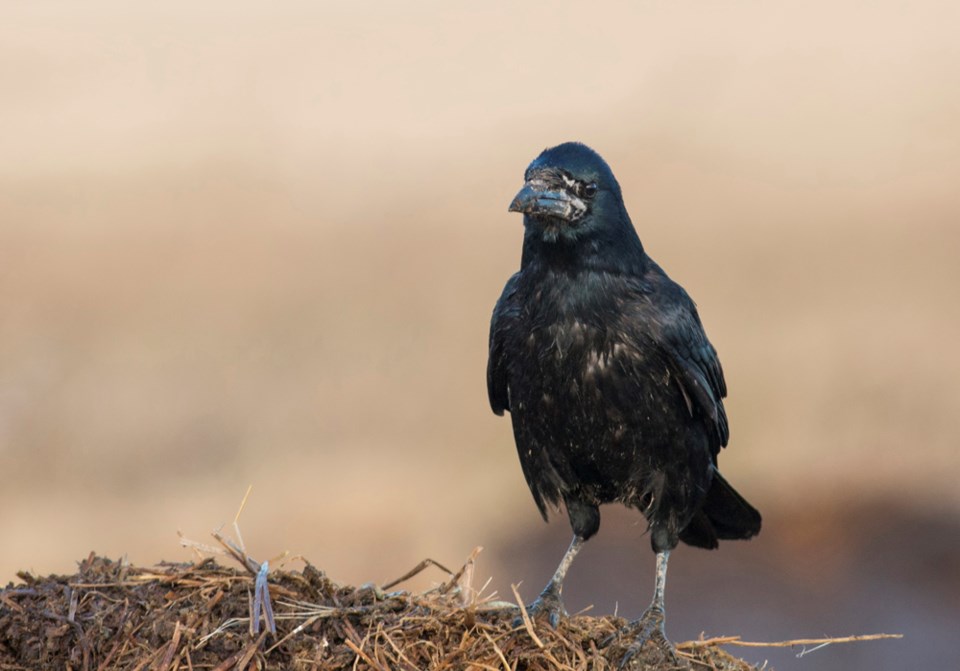If you see a Google car in Burnaby today, it’s not creating a Google map, it’s looking for a crow.
A very special crow.
Google, SFU and the Cornell Ornithology Institute have been jointly studying crows in Still Creek Burnaby for more than five years with some highly-specialized proprietary technology.
The technology is part of a research program on crow linguistics that led to a just-released scientific paper called, “Corvun brachyrhynchos linguistics: A complex understanding.”
The study did not attract a lot of attention until a Google team turned up this past week to try and find one of the crows which has gone missing.
That crow – as do 16 other city crows – has a tiny device implanted in its forehead as part of the research project. All the other crows have been accounted for except for ‘Rupert’ – the name given to the crow by the research team. The project, which is in its seventh year, found that crows have an extensive language and an understanding of grammar. But more astounding was the researchers found that crows understood the concepts of past and future and have a sense of humour.
Yesterday one of the Google team told a city hall staff person, who did not want their name used, that the technology is ground-breaking and that the U.S. government does not want the device to end up in the wrong hands.The Google worker said the team was confident they would recover the bird, but it would take time. The city hall employee said the Google worker told him the device was still transmitting weak co-ordinates but had stopped transmitting sound or video.
The Burnaby NOW contacted Google but was told by a spokesperson that they do not comment on any of their research projects.
The avian researchers used the Google technology with GPS and cell transmitters to monitor every minute in each crow’s life. The miniature transmitters, half the size of a thumbtack and in the shape of a half-globe, were implanted on the crows’ heads when they were fledglings. The incredibly sensitive transmitters allowed the researchers to hear what calls and sounds the crows made when they were in similar situations. It also transmitted 180 degree high definition visuals. For example: When the crows find a food source and communicate it to other crows, the system transmitted what sounds and motions the crow made to communicate what the food is and where it is to other crows. And it captured the other crows’ responses.
“It’s a monumental undertaking and, virtually, revealed things we had never seen or understood before,” Phd candidate Lorne Smith said of the research.
Smith was one of a team of 20 researchers over a five year-period who had to compare data and create a master crow dictionary. The team recorded more than 20,000 hours of video and sound.
Smith said that recent bird research has shown that some bird species, such as the Japanese Great Tit, use grammatical rules but nothing compared to what crows are capable of.
The study details one example where a male Still Creek crow, by using a series of caws, rattles, coos and clear notes, communicated to a female crow the whereabouts of a large chafer beetle infestation in Burnaby Heights. The information included when the male crow had filled up on the grubs (that morning), and how good they tasted. The female crow then communicated the information to three younger crows and they displayed clear signs of excitement. The female crow told the younger crows that next morning they would all go there. She signalled this information with a combination of neck shrugs and loud caws interspersed with throat clicks.
The study also revealed that crows have long memories and can identify individual human beings.
One crow told another crow about seeing a human being that was familiar to it, and had left it food on the hood of their car. The crow seemed to describe the human being as large and naked. Researchers believe the crow was referring to the man’s bald head.
While previous research had proved that crows do remember individuals, this is the first time that the crow language could be connected to the description of the human being.
Another time one crow told another crow that a human being walking into a store was stupid in crow linguistics. The researchers could not say why the crow determined the human was stupid, but the person was walking into a dollar store in New Westminster.
Birds have often been considered capable of large vocabularies and intelligence. Gray parrots have been known to understand 1,000 phrases, and one parrot, Alex, was part of a thirty-year experiment from 1977 to 2007, that showed he understood complex problems and solutions and had a sense of humour.
The crows, like Alex, also seemed to understand humour.
At one point during the research two crows were fighting over two McDonald’s bags with fries inside. One crow grabbed the bag and flew off, but the bag was empty because the other crow had already eaten all of the fries. The crow that ate the fries, jumped up and down, and in crow language said, “April Fools!”



